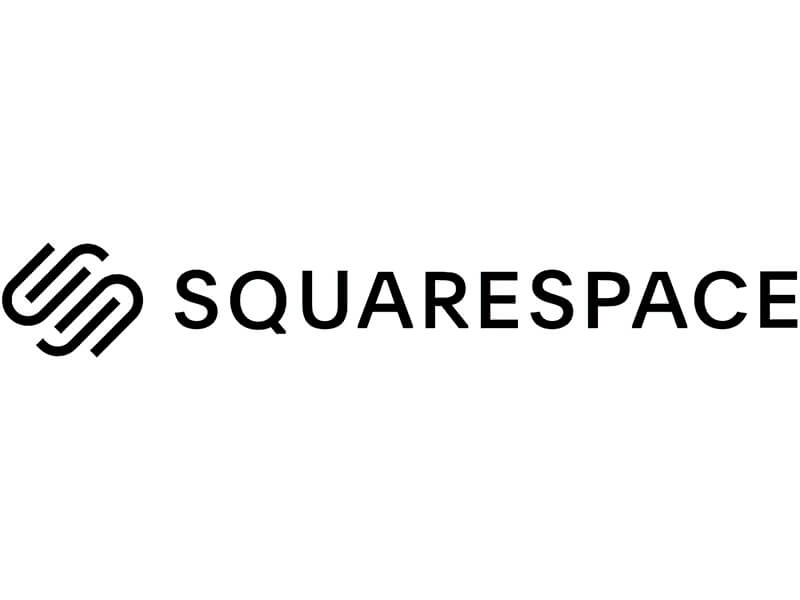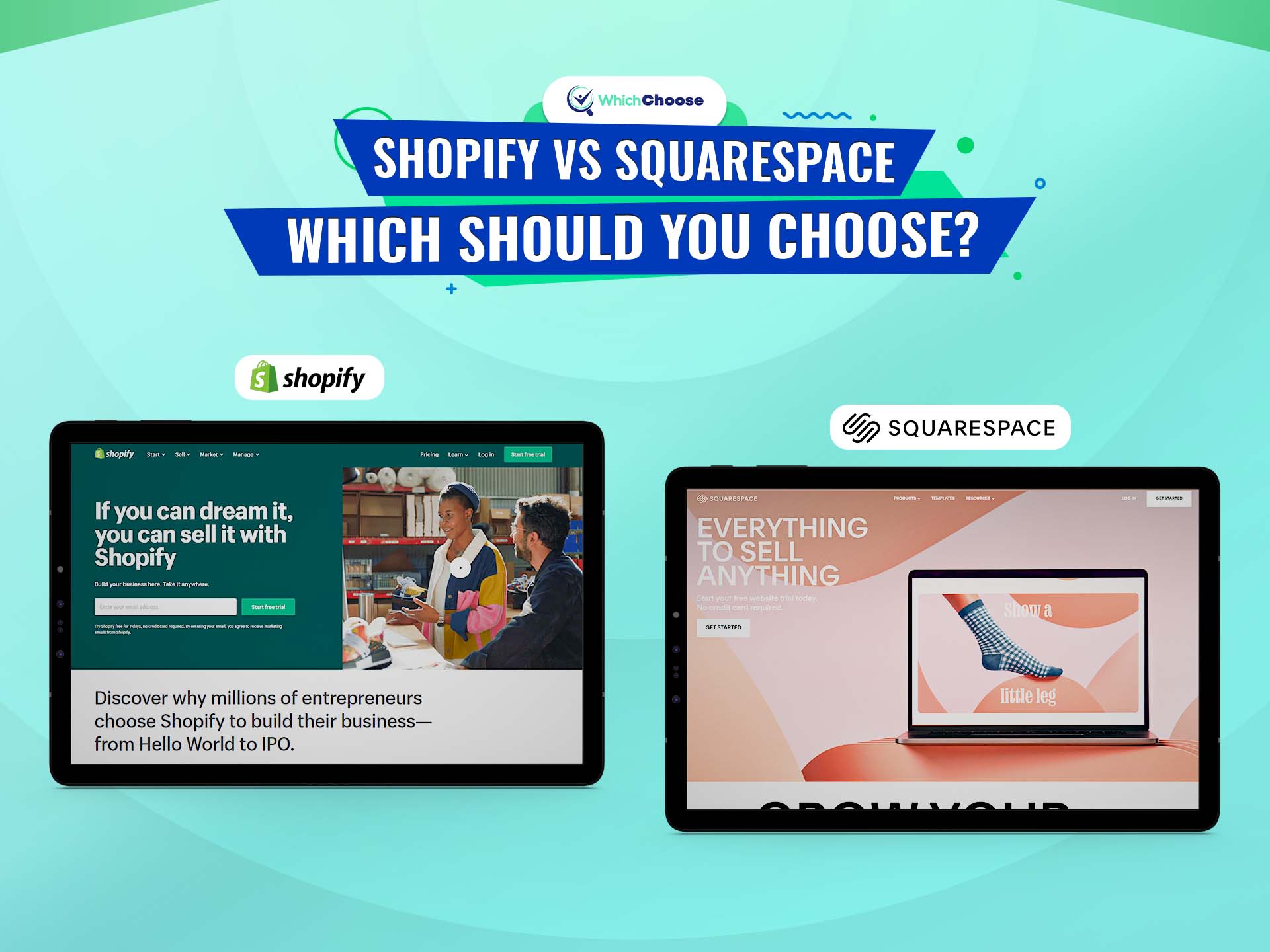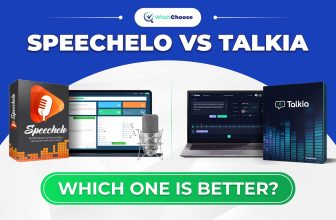Table of Contents
This post contains affiliate links. We earn an affiliate commission when you click our links to purchase products. It has no added cost to you.
If you are looking to set up an online store, you may wonder which platform you should use. Both Shopify and Squarespace are popular options; however, they are very different. In this blog, WhichChoose compares Shopify vs Squarespace to help you decide the suitable eCommerce.

Shopify Vs Squarespace: Overview
Point of sale.
Sales channels.
24/7.
Reports.
Customer segmentation.
Discount codes.
Square.
Cryptocurrency.
Paypal.
2Checkout.
FirstData.
Authorize.Net.
Marketing.
Squarespace-scheduling.
Resources and support.
Stripe.
Paypal.
1.1. Shopify
Shopify is an eCommerce platform that assists businesses of all sizes in selling digital and physical products. You can sell through an existing website or build a Shopify store. You can also sell via emails, social media, guest blog posts, and in-person with a Shopify buy button.
1.2. Squarespace
Squarespace is a website builder to aid creatives in building their website and showcasing their work, regardless of their technical ability.
Shopify vs Squarespace: Pros and Cons
It has numerous add-ons with extensions to integrate with your preferred tools.
It provides excellent customer support through email and live chat.
This platform has a large knowledge base and plenty of user-friendliness built in.
It has a robust community to help you answer your questions.
This platform provides many premium and free templates to select from.
It offers multi-channel selling via Facebook and Instagram.
This platform has integrations with offline sales solutions.
The prices can add up depending on the apps and tools users select.
It is very to use with much instruction.
It provides integrations with offline selling selections.
This platform offers an analytics system to aid you in checking your store’s performance.
It is excellent for print-on-demand selling.
This platform supplies great blogging tools for your content marketing strategy.
It offers good cost selections for companies on a budget.
Payment selections are limited.
Squarespace does not have as various options as Shopify for selling.
Shopify vs Squarespace: Ease of use

3.1. Shopify
Because of its hosted nature, Shopify has a user-friendly dashboard. This platform uses a drag-and-drop design, which implies you can easily add, move or remove sections by yourself with a few clicks. It also provides a clear interface with visual shortcuts and cues to customize themes, add products, and a domain on the main page. Thus, you don’t feel lost when creating your online store.
3.2. Squarespace
Though Squarespace is a hosted cart, it’s a little more tricky to get to grips with than its competitor. Squarespace provides drag-and-drop sections with several content blocks, which makes it easy for starters. Yet, the editor’s homepage is a little hard to navigate, and there are no visual cues.
Shopify vs Squarespace: E-commerce Features
| Shopify | Squarespace | |
| Payment options |
Shopify provides many payment gateways, such as Amazon Pay, PayPal, Square, or cryptocurrency, and over 100 other selections. |
Squarespace just supports only PayPal, Stripe, and Square. |
| Product types |
Shopify lets you sell digital or physical products. However, you need to install an app to sell digital products on this platform, like Digital downloads. |
You can sell physical or digital products on Squarespace. |
| Selling offline (POS) |
|
The point of sale system is created from Squarespace and Square. |
| Shipping options |
Shipping services, such as UPS and NHL and drop shipping, are available on Shopify. They make sure the shipping experience is as smooth as possible. |
Squarespace has been working with UPS to calculate shipper delivery rates. UPS also permits you to alter delivery costs depending on the weight or the nation you are shipping to. |
Compared to Squarespace, Shopify offers various payment and shipping options. Moreover, POS was created by Shopify, meaning Shopify can self-control features and user experience better. Besides, two platforms allow users to sell physical or digital products; however, you need to download Shopify’s app to sell digital items, while the other doesn’t need to use an app.
Shopify vs Squarespace: Marketing Features

5.1. Email Campaigns
Squarespace allows you to manage your website and mailing list in one place, yet, you have to pay extra costs to use it. This platform provides a drag-and-drop interface in the e-newsletter, making it easy to edit.
With Shopify, it has introduced an email-marketing tool – Shopify email, which is available on all plans without monthly commitments. However, Shopify email is basic and only permits users to send simple e-newsletters. The only plus point is that users can email for free 2500 subscribers, and users need to pay $1 for 1000 additional emails sent.
5.2. SEO
Here are some SEO features that Shopify and Squarespace offer:
| Shopify | Squarespace | |
| Page titles | Customizable for all pages. | Customizable for all pages. |
| Meta description | Customizable for all pages. | Customizable for all pages. |
| Sitemap | Automatically generated. | Automatically generated. |
| Google Analytics | Available. | Available. |
| 301redirects | Automatically | Manually. |
| Canonical tags | Through custom codes. | Through custom codes. |
| Personalized URLs |
|
Customizable for all pages. |
As you can see, both Shopify and Squarespace share the same features, such as meta descriptions, page titles, canonical tags, site maps, and google analytics. While Shopify redirects 301 automatically, you need to click the 301 redirect button on Squarespace’s page. Based on personalized URLs, Shopify provides more features than Squarespace.
5.3. Blogging
Squarespace owns excellent blogging features. With the built-in blog page, you can create excerpts, and blog posts, enable comments, categorizes posts, tag, and push the content to social media platforms, etc.
Familiarly, Shopify store owners can get benefits from the blogging feature without downloading any apps. However, Shopify website builder only offers some basic functionalities to write posts because it is not the main focus.
5.4. Social Media Integration
Shopify lets you sell on over 10 social media platforms like Messenger, Facebook, Instagram, etc. By doing this, this platform provides its merchants with a potent tool to approach more customers. In contrast, Squarespace store owners can only sell products on Instagram and push content to Tumblr, LinkedIn, Pinterest, Twitter, and Facebook. This leads to obstacles if you want to scale your business and approach your customers.
Shopify vs Squarespace: Pricing
6.1. Shopify
While Squarespace limits the selections to four, Shopify selects to add an extra selection, consequently making them five, including:
- Shopify Starter: $5/ month.
- Basic Shopify: $9/ month.
- Advanced Shopify: $299/ month.
- Shopify: $79/ month.
- Shopify Plus with extra features for large businesses: Starting at $2000/ month.
6.2. Squarespace
Here are the prices of Squarespace, as follows:
- Basic: $30 per month.
- Advanced: $46 per month.
- Personal: $16 per month.
- Business: $26 per month.
Both Shopify and Squarespace are great eCommerce website builders. However, we suggest you select Shopify because it has the best sales features, such as payment, shipping options, etc. Moreover, Shopify provides many price selections, allowing you to choose a suitable plan. WhichChoose hopes this post has been helpful in letting you know about the Shopify vs Squarespace comparison.
WhichChoose is the website products and services review that helps users in the world to find what the best is and shop easily.










